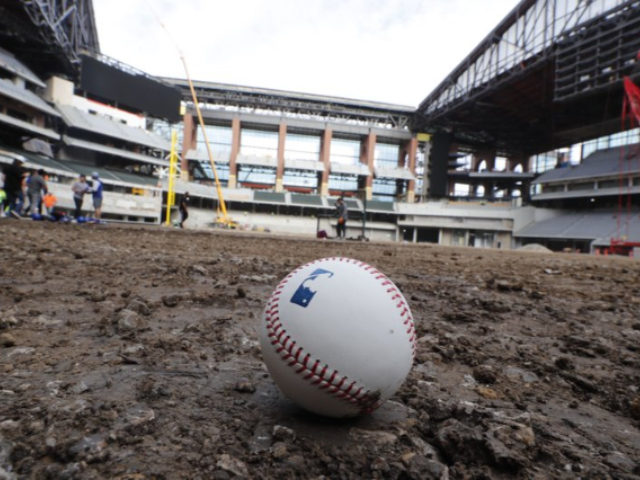SAN DIEGO (AP) — Baseballs used during the 2019 regular season had less drag on average, contributing to a power surge that resulted in a record number of home runs, according to a study commissioned by Major League Baseball and released by the league Wednesday.
The report produced by a committee of science professors said inconsistencies in the seams of the baseballs, as well as “changes in player behavior,” were chief culprits for the spike in home runs. Batters connected 6,776 times in the regular season, smashing the record of 6,105 set in 2017.
The committee says it did not find evidence that MLB intentionally altered the baseballs and believes the inconsistencies were due to “manufacturing variability.” The balls are hand sewn by workers at Rawlings’ factory in Costa Rica.
The 27-page report was written by Alan Nathan, Jim Albert, Peko Hosoi and Lloyd Smith.
A series of recommendations were provided. The scientists say MLB should consider installing humidors at all 30 ballparks “to reduce the variability in storage conditions,” and install atmospheric tracking systems in each stadium. They believe Rawlings should begin tracking dates that baseballs are manufactured and shipped, and they also have suggested a study with a larger sample size to explore the possibility that carry is influenced by the rubbing mud applied to bright, white baseballs before they are used in games.
The group also confirmed suspicions by players and coaches that the “juiced” ball was carrying less during the 2019 postseason. Cardinals manager Mike Shildt said during the NL Championship Series that St. Louis’ analytics team believed fly balls were traveling 4 1/2 feet less on average. That backed a study published by data scientist Rob Arthur at Baseball Prospects showing the balls suddenly had less drag.
The scientists could not determine why the playoff balls weren’t flying as far, though. MLB has said the postseason balls were pulled from the same batch as the regular season ones.
The aerodynamics of the baseballs were found to be notably different even within each season. The committee cited “significant ball-to-ball variation in the baseball drag that is large compared to the year-to-year change in the average drag.”
The committee concluded that 60% of the home run surge across 2018-19 could be attributed to an increase in carry, with 40% due to players attempting to hit more fly balls.
The scientists were set to address reporters at baseball’s winter meetings later Wednesday. They will be joined by MLB executives Morgan Sword and Chris Young, as well as Rawlings president and CEO Michael Zlaket. MLB owns a minority stake in Rawlings, and Peter Seidler, the San Diego Padres general partner, has chief oversight of the equity firm with a majority share.
The study was conducted using laboratory testing of baseballs dating to 2013, as well as data pulled from MLB’s Statcast tracking system. The group said it “significantly modified” its lab tests from a previous study released in 2018, which also found that drag in the baseball was decreasing but did not confirm that seam height inconsistencies were the strongest factor.
Changes to the roundness of the ball, surface roughness and the thickness of the laces were found to be “relatively consistent.”

COMMENTS
Please let us know if you're having issues with commenting.